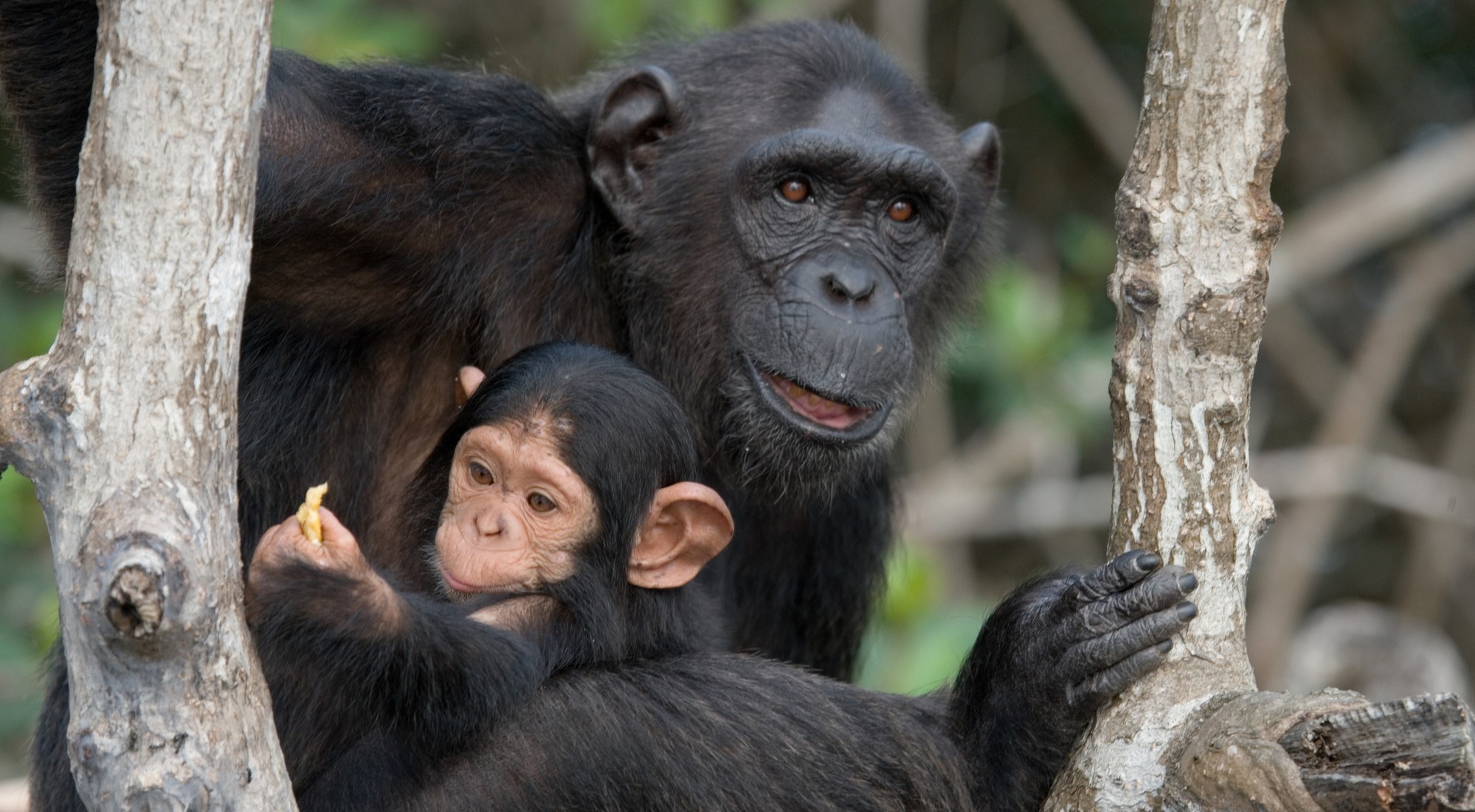

Holding hands isn’t just for human sweethearts. Chimps often clutch each other’s palms while grooming in a behavior known as handclasping. Handclasping is common among chimpanzees, and this endearing act is a social custom passed on through generations, as a study published today in Science Advances reports. What’s more, a chimp will mimic the handclasp style of the most influential members of the group, the primatologists discovered.
“This study is fascinating because it captures the nuance of social transmission of customs among chimpanzees,” says Mary Lee Jensvold, a primate communication scientist at the Fauna Foundation and senior lecturer at Central Washington University who was not affiliated with the study. “As someone who has known this in my interactions and relationships with captive chimpanzees, it’s great to see the data to support that.”
Behavioral scientists previously thought that mirroring others of a higher social status was something unique to humans. Consider the influential power of celebrities such as Michael Jordan. People who wanted to “Be like Mike,” as the classic Gatorade ad broadcasted, imitated the way he dressed and bought products that he used. Jensvold says that “in human culture we wouldn’t question that we adapt the customs of high-ranking and prestigious individuals, and this study provides preliminary evidence of the same methods in chimpanzees.”
[Related: Adolescent chimpanzees might be less impulsive than human teens]
Handclasp grooming was discovered in 1978, one of the first times researchers observed social customs in chimps. Though like a human handshake, there’s more than one way for a chimp to grip the other’s hand, observed Edwin van Leeuwen, an assistant professor of animal behavior and cognition at Utrecht University in the Netherlands and lead study author. Some chimps like to press their palms together. Others prefer grasping another’s wrist and elbow. Chimps seem to try out different handclasp styles throughout the years before adopting the one most used in their group.
In humans, there are multiple driving forces—peer pressure, desire to be accepted by others, fear of being frozen out—that explain conformity in groups. In the current study, the authors wanted to figure out why chimps ended up following the most popular handclasp behavior in their group, too. Their hypothesis was that chimps learn to conform from similar social pressures as people do.
From 2007 to 2019, the team looked for two types of social-learning biases in two groups of 71 semi-wild chimpanzees living in the Chimfunshi Wildlife Orphanage Trust in Zambia. The first was majority bias, when a person or animal adapts its behavior to be like most of the group. The second was dominance and prestige-based bias, in which individuals imitate others with a higher social status.
Within a group, chimps showed signs of majority bias as most showed similar hand-holding methods. One explanation, the authors propose, is that following the majority may help with gaining support in times of conflict or if there is a need for cooperation.
Mothers play a huge role in shaping the actions of chimps, exposing infants to the grooming technique they will use throughout their life. “The young ones in these groups grow up not knowing any better that this handclasp behavior is part of chimp life,” van Leeuwen says.

The authors also found clear signs of dominance and prestige-based bias. Young and lower-ranked chimps were more likely to adopt handclasp styles to match those of higher-ranked apes.
One observation the team noticed is that the grooming handclasp does not seem to provide any survival benefit. Instead, adopting a certain handclasp style appears to be more of a social perk in some chimp communities. Chimps may have evolved to follow others in higher positions because they’re assumed to have a certain level of expertise or wisdom, write the authors. They may also mirror a higher-ranking chimp’s gestures as a way to increase their own status. “Adopting the styles of older and dominant individuals is a way to gain social acceptance, and with the increased rapport perhaps it garners increased dominance,” Jensvold says.
[Related: By combining screams, chimps seem to know 400 ‘words’]
Does this mean individuality is discouraged among chimps? Not necessarily. There is no body of evidence showing animals discourage or punish others for not adhering to social norms, says van Leeuwen. In fact, when there was some resistance to conform, van Leeuwen noticed some chimps would participate in “negotiations” between two partners who used different handclasp grooming preferences. However, he adds, “this has never resulted in any conflicts or agitations.”
Handclasping during grooming isn’t the only example of cultural transmission in the social lives of primates—tool use is a common one, but other, more difficult-to-detect behaviors probably exist, too. Expanding on the current findings, van Leeuwen is looking for evidence of other aspects of social learning in chimps’ everyday life. His theory is that cultural processes influence the social lives of animals more than we expect.
The findings could also give evolutionary biologists more insight into how our own social norms, such as mimicking the behaviors of influential individuals, could have contributed to our species’s success. Frans de Waal, a primatologist at the Emory National Primate Research Center in Atlanta who was also not a part of the study, says that “the more we learn about the cultural practices of other species, especially other primates, the more we learn that some of the cultural tendencies observed in human society are very ancient indeed.”